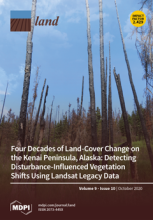/ library resources
Showing items 1 through 9 of 26.Introduced as a soil erosion deterrent, salt cedar has become a menace along riverbeds in the desert southwest. Salt cedar replaces native species, permanently altering the structure, composition, function, and natural processes of the landscape.
In today’s agriculture, maize is considered to be one of the major feed, food and industrial crops. Cultivation of maize by inappropriate agricultural practices and on unsuitable sites is connected with specific risks of soil degradation, mainly due to water erosion of the soil.
Reductions in water availability and increasing rainfall variability are generating a narrative of growing competition for water in the Mediterranean basin.
This work proposes a methodology whereby the selection of hydrologic and land-use cover change (LUCC) models allows an assessment of the proportional variation in potential groundwater recharge (PGR) due to both land-use cover change (LUCC) and some climate change scenarios for 2050.
Aiming to store water in wet seasons and outflow water in dry seasons, and improve reservoirs’ performance, are of great importance. Given the developmental disparities across regions and uneven precipitation within one year, water transfer could be an efficient solution.
The Franks Tract State Recreation Area (Franks Tract) is an example of a complex contemporary park mired in ecological and socio-political contestation of what it is and should be.
Prior research has documented environmental and economic benefits of green stormwater infrastructure (GSI); literature on GSI social benefits is also becoming more prevalent among scholars around the world.
Food, energy and water are important basic resources that affect the sustainable development of a region. The influence of food–energy–water (FEW) nexus on sustainable development has quickly become a frontier topic since the Sustainable Development Goals (SDGs) were put forward.
The near elimination of inland salt marshes in Central Europe occurred throughout the 19th and 20th centuries, and the currently remaining marshes exist in a degraded condition.
Pagination
Land Library Search
Through our robust search engine, you can search for any item of the over 73,000 highly curated resources in the Land Library.
If you would like to find an overview of what is possible, feel free to peruse the Search Guide.




